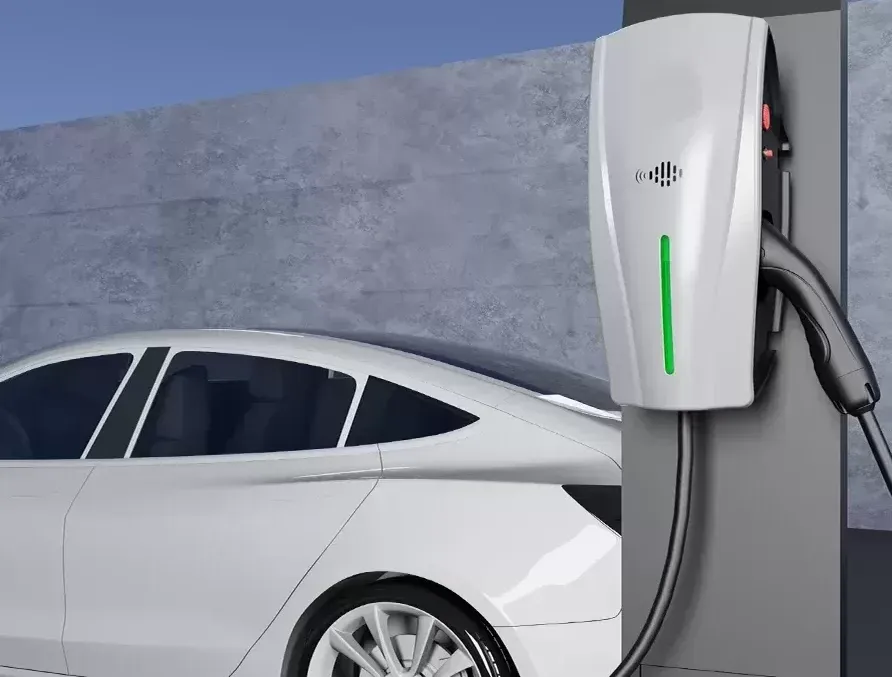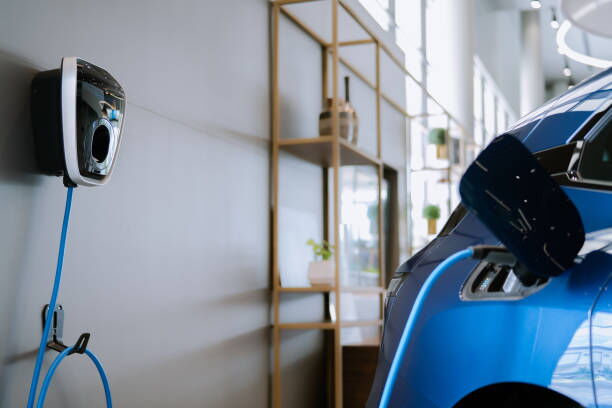As electric vehicles (EVs) become increasingly popular, home charging has become a convenient and essential part of EV ownership. However, safely charging your EV at home requires an understanding of the protective features built into Electric Vehicle Supply Equipment (EVSE) and the charging process. This guide will explore the various protection functions in EV charging systems and offer insights into the different levels of EVSE charging available for home use.

EV charging systems are designed with multiple protection functions to ensure safety during the charging process. These safeguards prevent damage to your vehicle, charging equipment, and home electrical system. Below are the key protection functions in EV charging systems:
Undervoltage protection ensures that if the voltage supplied to the EV charger drops below a certain threshold, the system will automatically shut down the charging process. This prevents potential damage to the vehicle's battery and electrical components due to insufficient voltage levels. It also helps maintain the longevity of the charger and protects it from operating under suboptimal conditions.
Conversely, overvoltage protection is designed to cut off the charging process if the voltage supplied exceeds the normal operating range. High voltage can cause significant damage to the EV's battery and electronics, potentially leading to dangerous situations. Overvoltage protection acts as a crucial safeguard against power surges and other electrical issues that might arise from the grid or local power supply.
Leakage protection is vital for preventing electrical leaks that could result in shocks or electrocution. If the system detects any unintended electrical current flowing outside the designated path, it will immediately halt the charging process. This feature is particularly important for ensuring the safety of anyone near the charging station, especially in outdoor or damp environments.
Proper grounding is essential for any electrical system, including EV chargers. Grounding protection ensures that the charging system is correctly grounded, reducing the risk of electrical shocks and protecting both the vehicle and the home's electrical system from potential faults. If a grounding issue is detected, the system will stop charging until the problem is resolved.
Overcurrent protection prevents the charging system from drawing more current than it is designed to handle. Excessive current flow can cause overheating, potentially leading to fires or damage to the charger, vehicle, or home wiring. This protection function ensures that the current remains within safe limits, thereby protecting all connected equipment.
Reverse polarity occurs when the neutral and live wires are incorrectly connected, which can lead to dangerous situations, including electric shock or damage to the EV's electrical system. Reverse polarity protection automatically detects incorrect wiring and prevents the charger from operating until the wiring is corrected, ensuring safe charging.
EV chargers can generate heat during the charging process, especially when operating at higher power levels. Over temperature protection monitors the charger's temperature and shuts down the system if it exceeds a safe operating range. This feature helps prevent overheating, which could lead to equipment failure or even fire hazards.
The Control Pilot (CP) signal is an essential communication link between the EV and the charging station. It regulates the charging process and ensures that everything operates smoothly. CP signal fault protection detects any abnormalities in this communication, such as signal loss or interference, and stops the charging process to prevent potential issues.
A contactor is an electrical relay used to control the flow of electricity in the charger. If a contactor becomes stuck in the closed position, it could result in uncontrolled power flow, leading to equipment damage or safety hazards. Contactor sticking protection monitors the contactor's operation and disconnects power if it detects a malfunction.
Lightning strikes and power surges pose a significant threat to any electrical equipment, including EV chargers. Lightning protection safeguards the charging system from these sudden spikes in voltage, preventing damage to the charger, vehicle, and home electrical system. This feature is especially important in regions prone to thunderstorms.

When it comes to charging your EV at home, the type of EVSE you use plays a crucial role in determining the charging speed and safety. There are three main levels of EVSE charging: Level 1, Level 2, and Level 3, each offering different benefits and charging speeds.
Level 1 charging uses a standard household plug (120V) and provides 2-5 miles of range per hour of charging. While it is the slowest charging option, it is the most accessible since it requires no special installation. However, there are a few safety precautions to keep in mind:
Ensure your charger or receptacle has Ground Fault Circuit Interrupter (GFCI) protection to prevent accidental shocks and electrocution.
Use a dedicated circuit exclusively for charging your vehicle, avoiding shared power with other appliances to prevent overloading.
Always use the manufacturer-provided charging cord for safety and optimal performance.
Level 2 charging offers a significant upgrade in charging speed compared to Level 1. It uses a 240V outlet, similar to what is used for large appliances like dryers, and can provide 10-30 miles of range per hour. Level 2 chargers typically require professional installation but offer faster charging times, making them ideal for overnight charging.
Additionally, Level 2 chargers come with built-in safety features, such as overcurrent protection and temperature monitoring, to ensure safe operation.
Level 3 charging, also known as DC fast charging, is the fastest charging option available and is primarily used in commercial settings. It can charge an EV battery to 80% in as little as 20-30 minutes. However, due to its high power requirements, Level 3 charging is not typically available for home use. It requires specialized equipment and installation, making it more suitable for public charging stations or fleet operations.
Charging your EV at home is a convenient and efficient way to keep your vehicle powered, but it requires careful consideration of safety features and proper equipment. Understanding the protection functions built into EV charging systems, such as undervoltage, overvoltage, and leakage protection, helps ensure that your charging process is safe and reliable. Additionally, choosing the right level of EVSE charging for your needs can optimize your charging experience, whether you prefer the simplicity of Level 1, the speed of Level 2, or the power of Level 3. By following these guidelines and using the appropriate equipment, you can charge your EV safely and efficiently at home, ensuring your vehicle is always ready for the road ahead.
